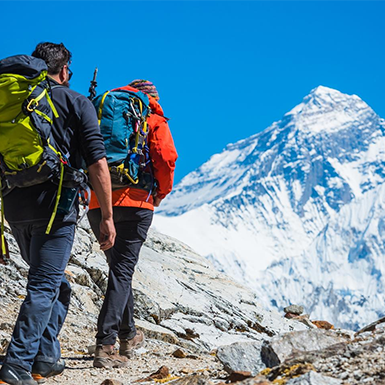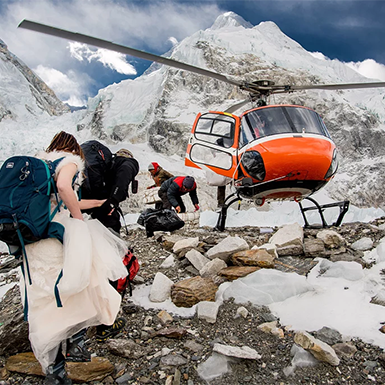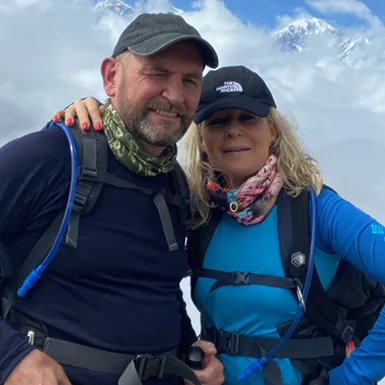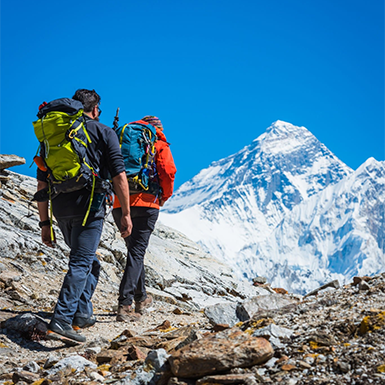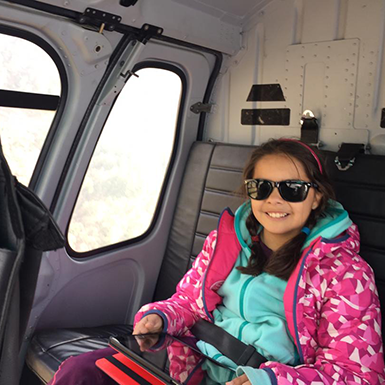The Everest Base Camp Trek in September offers a mesmerizing journey through the breathtaking Himalayan landscape. It’s a perfect time for adventure enthusiasts to explore this iconic trail. Here’s why September stands out for this thrilling expedition.
Firstly, September marks the end of the monsoon season in Nepal. The skies clear up, and the lush greenery comes to life, making the surroundings exceptionally picturesque. The crisp, clean air enhances visibility, offering unobstructed views of the majestic peaks.
Moreover, the temperatures in September are moderate, with daytime highs ranging from 15°C to 20°C (59°F to 68°F) in the Everest region. This means comfortable trekking conditions without the extreme cold of winter or the scorching heat of summer.
Furthermore, the trails are less crowded in September than peak tourist months. You can savor the serenity of the mountains without the hustle and bustle of larger crowds.
Equally important, the teahouses and lodges along the route are fully operational, providing cozy accommodations and hearty meals. You won’t have to worry about a lack of amenities.
Lastly, September offers the opportunity to witness the local culture and festivals. The Mani Rimdu Festival, celebrated at Tengboche Monastery, is a highlight. You can immerse yourself in the vibrant traditions of the Sherpa people.
In addition, the well-marked trails, experienced guides, and porters make the trek safe and accessible even for beginners.
In September, the Everest Base Camp Trek combines favorable weather, fewer crowds, cultural experiences, and comfortable accommodations, making it an ideal time to go on this remarkable adventure. Take the chance to trek amidst the world’s highest peaks in their full glory during this stunning month.
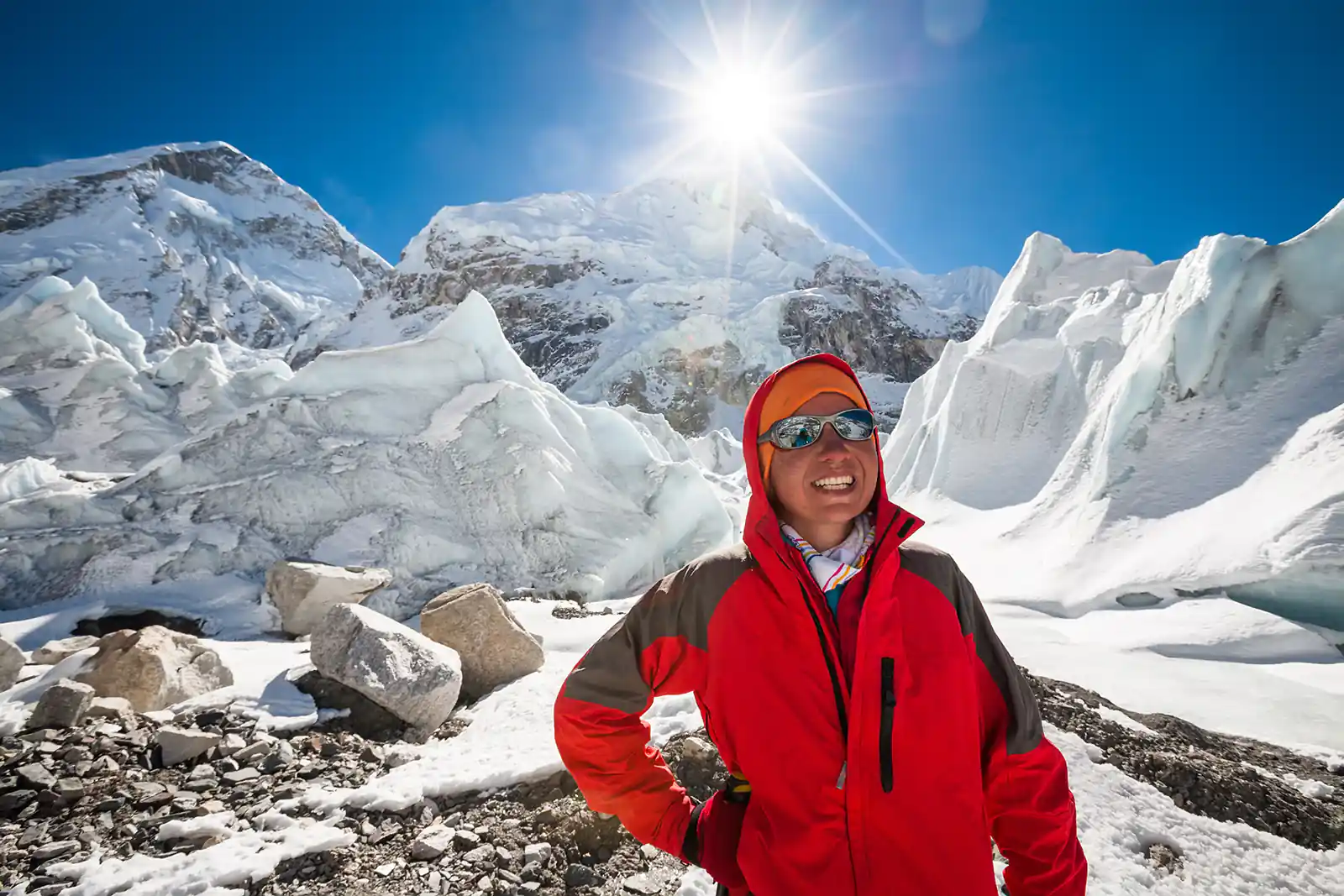
Preparing for Your Trek
Preparing for your Everest Base Camp Trek in September involves careful planning to ensure a safe and enjoyable adventure. Here are key aspects to consider:
Packing essentials for September weather
Firstly, packing essentials for the weather in September is crucial. Given the moderate temperatures, pack layers of clothing like moisture-wicking base layers, insulated jackets, and a sturdy waterproof jacket. Remember comfortable trekking boots, thermal socks, and a good-quality backpack. Pack and use sunscreen, wear sunglasses, and don a wide-brimmed hat to shield yourself from the intense mountain sun. A reliable sleeping bag and a refillable water bottle are equally important.
Necessary permits and documentation.
Next, ensure you have the necessary permits and documentation. You’ll need a Sagarmatha National Park Permit and a TIMS (Trekkers’ Information Management System) card. These are obtainable in Kathmandu or Lukla before starting your trek. Make copies of your passport, visa, and permits to be safe.
Physical fitness and training tips.
Start preparing for physical fitness and training a few months in advance. Focus on cardiovascular exercises like hiking, running, or cycling to improve endurance. Prioritize strengthening your leg, core, and back muscles to better cope with the physical demands of trekking at high altitudes and acclimatizing gradually to higher altitudes. At the same time, trekking is vital to mitigate the risk of altitude sickness.
Lastly, listen to your body and take breaks during the trek. Remember to stay well-hydrated and consume balanced meals regularly to sustain your energy levels. Hiring a local guide is a wise choice as they are experienced in navigating the terrain and can provide valuable assistance.
Preparing for the Everest Base Camp Trek in September involves packing wisely, obtaining the required permits, physical conditioning, and attentive self-care during the journey. With these aspects covered, you’ll be well-equipped for an unforgettable trek through the stunning Himalayas.
Getting Everest Base Camp Trek in September
To kickstart your Everest Base Camp Trek in September, you’ll first need to reach Kathmandu, Nepal, the gateway to this incredible journey. Here’s how to get there and an overview of the itinerary:
Reaching Kathmandu, Nepal:
1. International Flights: Most trekkers arrive in Kathmandu by taking international flights to Tribhuvan International Airport (TIA). Major airlines connect Kathmandu to major cities worldwide.
Domestic Flights to Lukla or Alternative Routes:
2. Lukla Flights: From Kathmandu, you can catch a domestic flight to Lukla, the starting point for many Everest treks. The flight offers breathtaking views of the Himalayas but can be weather-dependent, so flexibility in your travel plans is essential.
3. Alternative Routes: Some trekkers opt for alternative routes, like flying to Phaplu or driving to Jiri, which adds extra trekking days to your journey but offers a unique experience with fewer crowds.
Overview of the Itinerary:
4. Kathmandu (Day 1-2): Spend your first day in Kathmandu obtaining necessary permits and exploring the vibrant city. Explore the rich cultural heritage of Nepal by visiting iconic locations such as Durbar Square and the revered Swayambhunath Stupa.
5. Kathmandu to Lukla (Day 3): If you’re flying to Lukla, take an early morning flight and start your trek on the same day. Alternatively, if you’re taking the overland route, drive to Jiri or Phaplu.
6. Lukla to Phakding (Day 4): Trek from Lukla to the quaint village of Phakding, where you’ll experience your first night on the trail.
7. Namche Bazaar (Day 5-7): Carry on with your trek to the lively Namche Bazaar, a charming Sherpa town celebrated for its bustling markets and breathtaking vistas of Everest and surrounding peaks.
8. Acclimatization (Day 8): Spend an extra day in Namche Bazaar to acclimatize to higher altitudes. Discover the picturesque surroundings and immerse yourself in the awe-inspiring natural beauty.
9. Tengboche and Beyond (Day 9-12): Trek through picturesque landscapes, passing Tengboche Monastery and several charming villages.
10. Everest Base Camp (Day 13-14): Reach the ultimate destination, Everest Base Camp, and witness the awe-inspiring Khumbu Icefall and glaciers.
11. Kala Patthar and Return (Day 15-16): Hike to Kala Patthar for a sunrise view of Everest, then retrace your steps to Lukla.
12. Kathmandu (Day 17-18): Fly or drive back to Kathmandu, where you can reflect on your incredible adventure and explore more of the city before heading home.
In conclusion, reaching Kathmandu and navigating to Lukla or alternative routes sets the stage for your Everest Base Camp Trek in September. The itinerary offers cultural experiences and stunning natural beauty as you reach the base of the world’s highest peak.
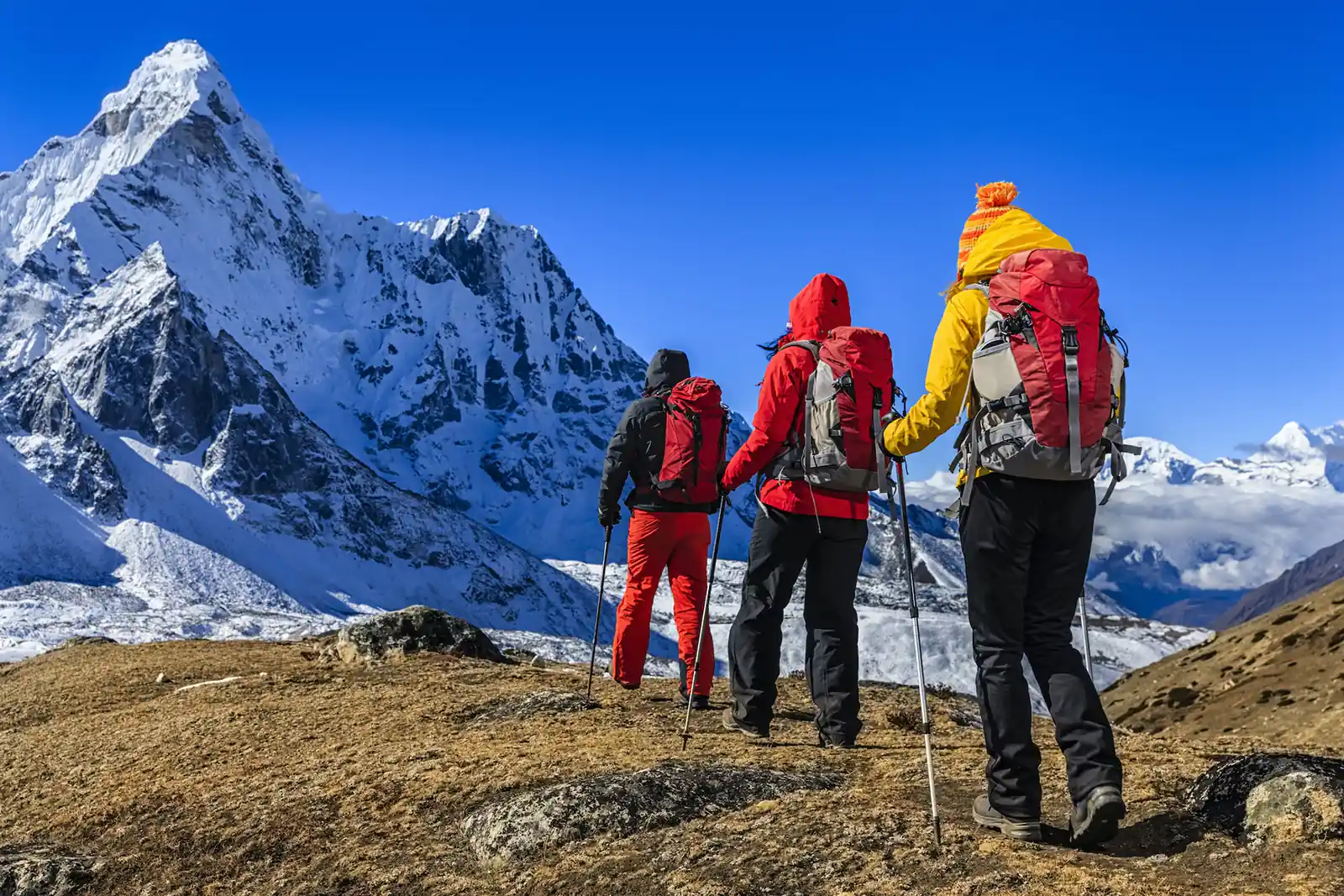
Weather and Climate in September:
In September, the weather in the Everest Base Camp region is generally favorable for trekking. Here’s a detailed look at the conditions:
– Temperature: Daytime temperatures range from 15°C to 20°C (59°F to 68°F) in lower altitudes and can drop to -10°C (14°F) or lower at higher elevations. Nights are colder, especially at higher camps.
– Precipitation: September marks the end of the monsoon season, so rainfall decreases significantly. Though sporadic showers may occur, they tend to be brief, allowing clear skies to prevail for the most part.
– Visibility: Clear skies offer excellent visibility, allowing trekkers to enjoy unobstructed views of the stunning Himalayan peaks, including Mount Everest.
Advantages and Disadvantages of Trekking in September:
Advantages:
1. Clear Views: Due to clear skies and minimal cloud cover, September provides some of the best mountain views.
2. Fewer Crowds: Compared to the peak trekking months, September sees fewer tourists, making the trails less crowded.
3. Green Landscape: The monsoon rains rejuvenate the landscape, resulting in lush green scenery.
Disadvantages:
1. Chilly Nights: The nights can be pretty cold, especially at higher elevations, so you must pack warm clothing.
2. Occasional Rain: Although the monsoon is ending, there may still be occasional rain showers, so be prepared for wet weather.

Packing and Clothing Recommendations:
1. Layering: To accommodate fluctuating temperatures, consider layering your clothing. To stay prepared, begin with moisture-wicking base layers, incorporate insulation like fleece, and finish with a waterproof jacket.
2. Trekking Boots: Invest in sturdy, waterproof trekking boots with good ankle support.
3. Warm Accessories: Pack thermal socks, gloves, a beanie, and a neck gaiter to stay warm during cold nights.
4. Rain Gear: To stay dry during unexpected showers, have a dependable waterproof jacket and rain pants with you.
5. Sun Protection: Remember sunglasses, sunscreen, and a wide-brimmed hat to protect against the intense mountain sun.
6. Sleeping Bag: It’s crucial to have a high-quality sleeping bag designed for sub-zero temperatures to ensure a comfortable and safe experience.
7. Water Bottle: Ensure you have a refillable water bottle to help you stay well-hydrated throughout your journey.
8. Backpack: Use a comfortable, well-fitting backpack to carry your essentials.
By being well-prepared with appropriate clothing and gear, you can fully enjoy the Everest Base Camp Trek in September while taking advantage of the favorable weather conditions and the beauty of the Himalayas.
Flora and Fauna:
The Everest Base Camp region in September showcases a unique biodiversity. As you embark on your trek, you’ll have the opportunity to observe diverse and fascinating flora and fauna within Nepal’s distinct ecological zones.
Flora:
1. Alpine Meadows: In lower elevations, lush forests abound with rhododendrons and pine trees, creating a colorful spectacle. As you ascend, the landscape transitions to alpine meadows adorned with vibrant wildflowers featuring delicate primulas and striking blue poppies.
2. Mosses and Lichens: As you ascend higher, mosses and lichens cling to rocks and cliffs, displaying a stunning tapestry of life.
Fauna:
1. Himalayan Tahr: These mountain goats, with their distinctive curved horns, are often seen grazing on steep slopes.
2. Red Panda: While elusive, the red panda occasionally appears. Be sure to be vigilant and on the lookout for this endangered species.
3. Himalayan Monal: The vibrant and striking Himalayan monal, commonly known as the Danphe, holds the prestigious title of Nepal’s national bird. Its iridescent plumage is a sight to behold.
Conservation Efforts:
Efforts in conservation play a pivotal role in safeguarding this fragile ecosystem. Organizations like the Sagarmatha National Park Project work tirelessly to protect flora and fauna. We encourage trekkers to diligently follow the Leave No Trace principles, reducing their environmental footprint during their journey.
Cultural Immersion:
Interactions with the local Sherpa community are a highlight of the trek. Sherpas are renowned for their warm hospitality and deep-rooted and vibrant cultural heritage.
Visiting Monasteries:
1. Tengboche Monastery: This is a spiritual trek oasis where you can witness daily Buddhist rituals and ceremonies amidst stunning mountain views.
2. Pangboche Monastery: Here, you can observe ancient religious traditions and perhaps receive blessings for your journey.
Experiencing Festivals:
If your trek coincides with the Mani Rimdu Festival in Tengboche, you’re in for a treat. This lively celebration of Tibetan Buddhism features masked dances, melodic music, and captivating cultural performances.
In conclusion, the Everest Base Camp Trek in September offers natural beauty and the opportunity to immerse yourself in the region’s unique biodiversity and connect with the welcoming Sherpa culture. It’s an adventure that encompasses nature’s wonders and human traditions’ richness.

Food and Accommodation:
During your Everest Base Camp Trek in September, you’ll find a network of teahouse lodges that offer comfortable lodging and delicious meals along the trail.
Teahouse Lodges:
1. Cozy Retreats: Teahouse lodges provide basic yet comfortable rooms with twin beds and shared bathrooms. Expect cozy, rustic accommodations that are perfect for trekkers.
2. Warmth: Many lodges have heated common areas where you can relax and warm up after trekking. These areas often feature wood-burning stoves.
Typical Meals:
1. Dal Bhat: A staple Nepali meal consisting of rice (bhat) served with lentil soup (dal), vegetables, pickles, and sometimes meat. It’s a hearty and filling option.
2. Momos: Delicious dumplings filled with meat or vegetables, often served with a spicy dipping sauce.
3. Sherpa Stew: A warming stew made with meat, potatoes, and vegetables. It’s an excellent choice for replenishing energy.
4. Noodles and Pasta: Various noodle and pasta dishes are on the menu, providing comfort for tired trekkers.
Local Cuisine to Try:
1. Yak Cheese: Sample yak cheese in various forms, from snacks to omelets. It’s a local specialty.
2. Tsampa: A roasted barley flour used to make porridge or bread, often eaten for breakfast.
Staying Safe and Comfortable:
1. Hydration: Staying hydrated is crucial, especially at higher altitudes. You can maintain hydration by purifying water using tablets or carrying a reusable water bottle with a filter.
2. Rest: Listen to your body and take acclimatization days as recommended. Proper rest is crucial for acclimatizing to higher altitudes.
3. Health: It’s advisable to have a basic first-aid kit, including essentials such as bandages, antiseptic wipes, and any necessary personal medications.
4. Altitude Sickness: Be aware of the symptoms of altitude sickness and acclimatize gradually. If symptoms persist, descend to lower altitudes.
In conclusion, the teahouse lodges along the Everest Base Camp Trek offer a warm and welcoming place to rest and refuel with delicious local cuisine. You can enjoy a comfortable and memorable trek in September by staying safe, hydrated, and respecting the local culture.
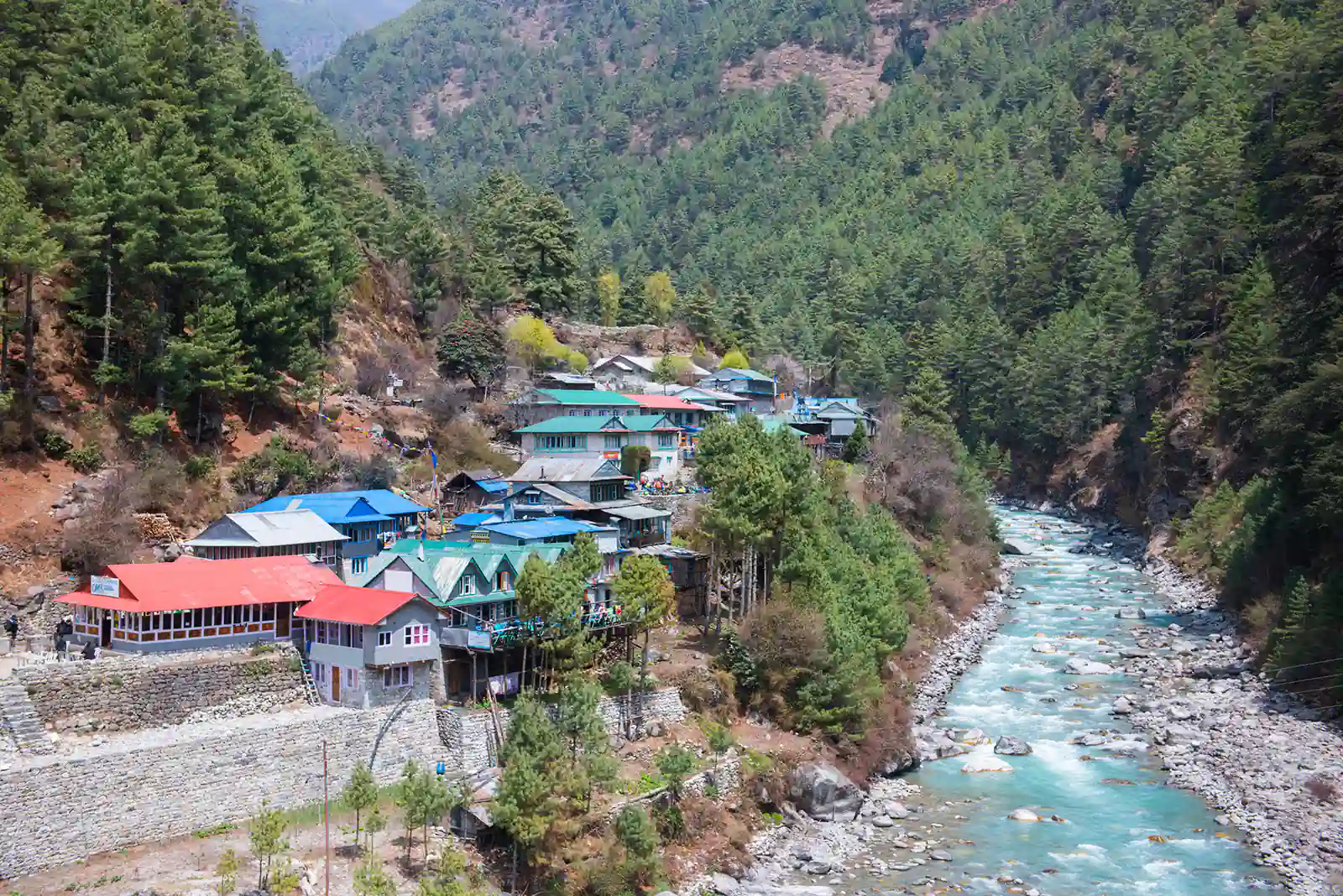
Safety and Health on the Everest Base Camp Trek in September:
Altitude Sickness and Its Prevention:
Altitude sickness, including Acute Mountain Sickness (AMS), is a severe concern during high-altitude treks like the Everest Base Camp Trek. To prevent it:
1. Acclimatization: To ensure a safe ascent, ascend gradually and allocate an extra day at higher altitudes for proper acclimatization. Common acclimatization points include Namche Bazaar and Dingboche.
2. Stay Hydrated: Maintaining proper hydration is essential, so drink ample fluids. However, it’s advisable to avoid alcohol and caffeine as they can contribute to dehydration.
3. Listen to Your Body: Pay attention to symptoms such as headaches, nausea, dizziness, and loss of appetite. If you experience these, descend to a lower altitude.
First Aid and Medical Facilities on the Trail:
1. Basic First Aid Kit: It’s prudent to carry a personal first-aid kit containing essential items such as bandages, antiseptic wipes, pain relievers, and any prescribed medications you may require.
2. Local Aid: Teahouse lodges often have basic medical supplies and can provide assistance for minor ailments.
3. Medical Clinics: Larger villages like Namche Bazaar and Pheriche have medical clinics where you can seek medical help. They may offer services like oxygen administration and essential medical consultations.
Emergency Evacuation Options:
In case of severe altitude sickness or other emergencies, there are evacuation options:
1. Helicopter Evacuation: Helicopter rescue services are available for emergencies. Your trekking agency or guide can arrange this if needed.
2. Walking Descent: Walking down to a lower altitude is the primary treatment for altitude sickness in less severe cases. Guides are trained to recognize symptoms and assist with descents.
3. Travel Insurance: Ensuring you have comprehensive travel insurance that includes coverage for emergency evacuation is of utmost importance. Ensure you understand the coverage and have the necessary contact information.
In conclusion, ensuring safety and health during the Everest Base Camp Trek in September requires careful attention to altitude sickness prevention, carrying a first-aid kit, knowing the locations of medical facilities, and being aware of emergency evacuation options. Preparedness and vigilance are key to a safe and enjoyable trek in this breathtaking region.
Equipment and Gear for the Everest Base Camp Trek in September:
To ensure a comfortable and safe trek, it’s essential to have the right equipment and gear. Here’s a detailed list:
1. Trekking Boots: Invest in sturdy, waterproof boots with a secure and comfortable fit, ensuring excellent ankle support.
2. Backpack: A comfortable, well-fitting backpack with adjustable straps to carry your gear.
3. Clothing:
– Moisture-wicking base layers.
– Insulated jacket.
– Waterproof and windproof jacket.
– Fleece or down jacket.
– Trekking pants and shorts.
– Thermal socks.
– Warm hat and gloves.
– Buff or neck gaiter.
4. Sleeping Bag: A good-quality sleeping bag suitable for sub-zero temperatures.
5. Trekking Poles: Adjustable trekking poles for stability on steep terrain.
6. Headlamp: With extra batteries for late-night bathroom trips.
7. Water Bottle: Carry a refillable water bottle with a filter or have purification tablets on hand to ensure safe drinking water during your journey.
8. Sunglasses: UV-protective sunglasses to shield your eyes from solid mountain sun.
9. First-Aid Kit: Basic first-aid supplies, including bandages, antiseptic wipes, pain relievers, and any prescribed medications.
10. Toiletries: Travel-sized toiletries, including soap, toothbrushes, toothpaste, and toilet paper.
Renting vs. Buying Gear in Nepal:
You can rent gear like sleeping bags, poles, and down jackets in Kathmandu and other major trekking hubs. This option is cost-effective and convenient, especially if you plan on trekking infrequently. However, bringing your own for comfort and proper fit for items like trekking boots and personal clothing is recommended.
Tips for Packing Efficiently:
1. Layering: Use the technique for clothing to adapt to changing temperatures quickly.
2. Compression Bags: Use compression bags to minimize the volume of your clothing.
3. Multi-Functional Items: Choose gear that can reduce weight and bulk for multiple purposes.
4. Only Essentials: Pack only what you need to keep your backpack as light as possible.
5. Duffel Bag: Consider a separate bag for gear you won’t need during the day’s trek. Leave it at your accommodation in Kathmandu.
By following these equipment and gear guidelines and packing efficiently, you’ll be well-prepared for the Everest Base Camp Trek in September, ensuring a comfortable and enjoyable journey through the Himalayas.
Photography Tips for the Everest Base Camp Trek in September:
Capturing the beauty of the Everest Base Camp Trek in September can be a rewarding experience. Here are some photography tips to help you make the most of your journey:
Capturing the Stunning Landscapes:
1. Golden Hours: The early morning and late afternoon offer the best lighting conditions for landscape photography. The soft, warm light enhances the mountains’ textures and colors.
2. Wide Angle Lens: Use a wide-angle lens to capture the vastness of the Himalayan landscape. It’s perfect for those sweeping mountain vistas.
3. Foreground Interest: Enhance the depth and context of your photographs by incorporating captivating foreground elements like prayer flags, rocks, or wildflowers.
4. Rule of Thirds: To achieve balanced and visually appealing images, employ the rule of thirds when composing your shots. Place critical elements along the gridlines or at the intersections.
Cultural and Wildlife Photography Tips:
1. Respectful Approach: When photographing local people, ask their permission first. Be respectful of their culture and traditions.
2. Candid Moments: Capture candid shots to convey the authenticity of the experience. People going about their daily lives, monks in monasteries, and interactions with locals make for compelling subjects.
3. Patience is Key: Wildlife sightings can be rare, but patience can pay off. Have your camera ready, and be prepared to wait for the perfect moment.
4. Telephoto Lens: A telephoto lens is helpful for wildlife photography, allowing you to capture distant animals without disturbing them.
Protecting Your Gear in Changing Weather Conditions:
1. Weather-Sealed Gear: If possible, use weather-sealed cameras and lenses. However, even with weather-sealed gear, it’s a good idea to protect your camera from rain and snow with a cover.
2. Silica Gel Packs: Include silica gel packs in your camera bag to absorb moisture and prevent condensation on your camera equipment, ensuring its protection during your trek.
3. Lens Cloth: Keep a lens cloth handy to remove moisture and dust from your lens.
4. Carry Spare Batteries: Cold temperatures can deplete your camera’s battery quickly, so it’s wise to have spare batteries. Keep them warm by storing them close to your body to ensure uninterrupted use during your photography sessions.
Following these photography tips, you can document your Everest Base Camp Trek in September with stunning and memorable images that capture the breathtaking landscapes and the rich cultural experiences.
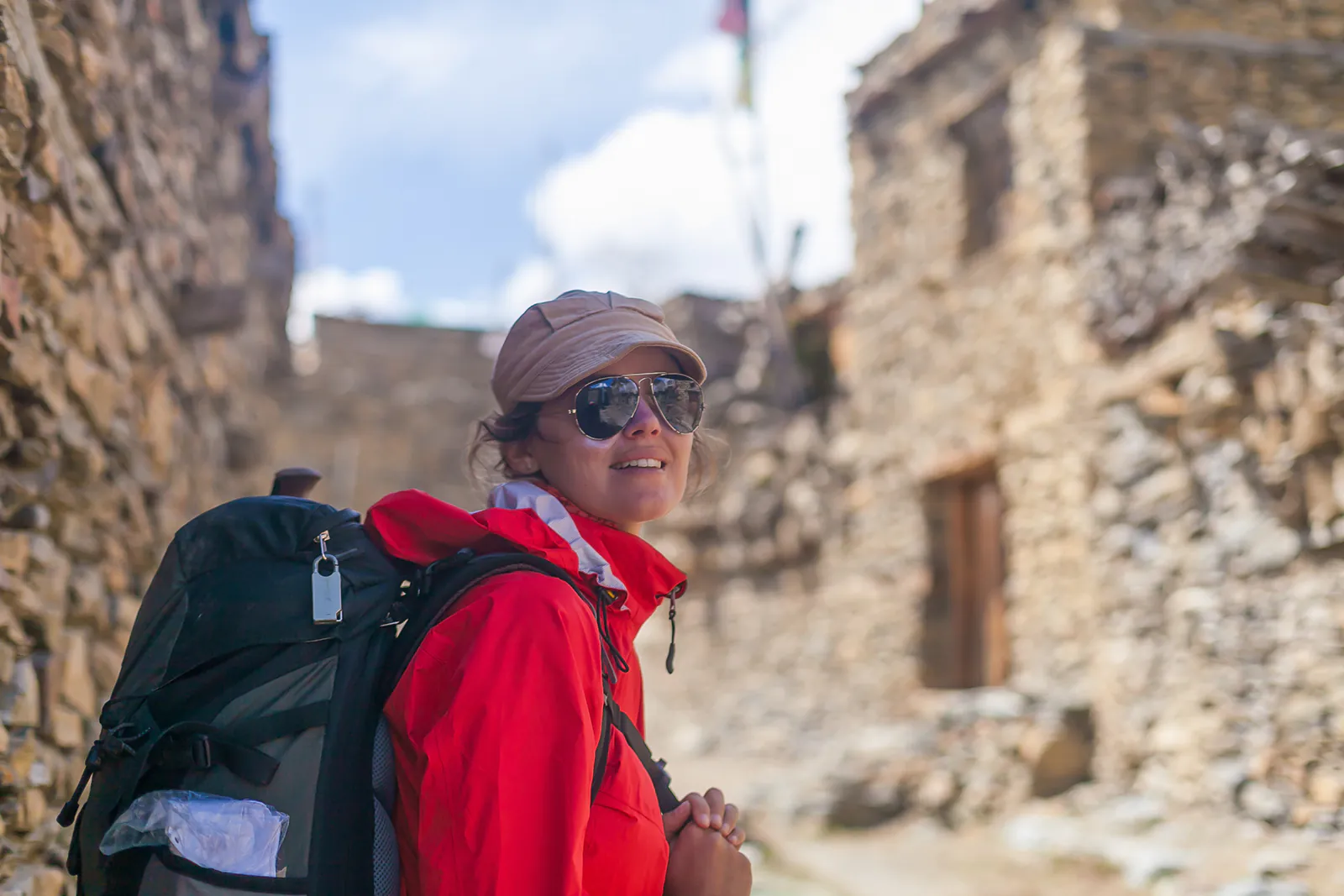
Budget and Costs for the Everest Base Camp Trek in September:
Planning your September budget for the Everest Base Camp Trek is essential to ensure a smooth and enjoyable journey. Here’s a breakdown of estimated expenses, tips for budget-conscious travelers, and hidden costs to be aware of:
Estimated Expenses:
1. Permits: The Sagarmatha National Park Permit and TIMS card cost approximately $45.
2. Accommodation: Teahouse lodge costs vary, but budget around $20-$40 per night.
3. Food: Meals in teahouses cost around $15-$30 daily.
4. Transport: Round-trip flights from Kathmandu to Lukla range from $400-$450. Overland transportation may be more budget-friendly.
5. Guides and Porters: If you hire a guide and porter, budget an additional $20-$30 per day for their services.
6. Miscellaneous: Plan for around $10-$20 daily for miscellaneous expenses like snacks, water, and incidentals.
Tips for Budget-Conscious Travelers:
1. Travel with a Group: Sharing costs with a group can significantly reduce expenses, especially for guides and porters.
2. Travel During Shoulder Seasons: September is an excellent time for the trek, but consider traveling during the shoulder seasons (pre-monsoon or post-monsoon) for potentially lower prices.
3. Independent Trekking: While guides and porters are helpful, independent trekking can be more budget-friendly. Make sure you’re well-prepared and have proper maps.
4. Bring Snacks: Pack some snacks from Kathmandu to save on in-trek snack costs.
Hidden Costs to Be Aware Of:
1. Altitude-Related Costs: Emergency evacuation can be expensive in altitude sickness. Ensure you have comprehensive travel insurance covering the region you plan to visit. This ensures you are adequately protected in case of unexpected situations.
2. Gear Rental: Rental costs can increase if you need to get your trekking gear. Consider renting only the essentials.
3. Tipping: It’s customary to tip guides and porters at the end of the trek, so budget for this.
4. Kathmandu Accommodation: If you spend extra nights in Kathmandu before or after the trek, factor in accommodation and meals.
By estimating your expenses, following budget-conscious tips, and being aware of potential hidden costs, you can plan your Everest Base Camp Trek budget effectively and have a memorable adventure without breaking the bank.
Trekking in September vs. Other Seasons for the Everest Base Camp Trek:
Trekking to Everest Base Camp is a remarkable adventure, but choosing the right season can significantly impact your experience. Here’s a comparison of trekking in September with other months, considering the pros and cons:
Trekking in September:
Pros:
1. Moderate Weather: September marks the end of the monsoon season, bringing moderate temperatures and clear skies. This means excellent visibility for mountain views.
2. Fewer Crowds: Compared to peak trekking months (spring and autumn), September sees fewer tourists, resulting in less crowded trails and teahouses.
3. Lush Landscape: The monsoon rains rejuvenate the landscape, painting the hillsides with vibrant greens and blooming wildflowers.
Cons:
1. Occasional Rain: While the monsoon wanes, occasional rain showers can still occur. Trekkers should be prepared for wet weather.
2. Chilly Nights: Nights can be cold, especially at higher altitudes. Proper gear is essential to stay warm.
Trekking in Other Seasons (Peak vs. Off-Peak):
Peak Seasons (Spring and Autumn):
Pros:
1. Stable Weather: Spring (March to May) and autumn (late September to November) offer the most stable weather conditions, with warm days and clear skies.
2. Ideal for Peak Climbing: If you plan to combine trekking with peak climbing, spring and autumn are ideal due to favorable climbing conditions.
Cons:
1. Crowded Trails: These are the most popular trekking months, resulting in crowded trails, teahouses, and higher prices.
Off-Peak Seasons (Winter and Monsoon):
Pros:
1. Solitude: If you prefer solitude and don’t mind colder temperatures, winter and monsoon (rainy) seasons offer quiet trails and a more peaceful experience.
2. Lower Prices: Accommodation and flights are more affordable during off-peak seasons.
Cons:
1. Cold and Challenging Weather: Winter (December to February) brings cold and harsh conditions. Monsoon (June to August) means heavy rainfall and sponges on the trails.
Trekking in September provides a well-balanced combination of favorable weather conditions and fewer crowds, making it an ideal time to explore the region. However, trekkers should be prepared for some rain and chilly nights. Selecting the optimal season depends on your preferences regarding weather, crowd levels, and desired experience while embarking on the Everest Base Camp Trek.
Conclusion:
Everest Base Camp Trek in September promises an unforgettable and unique adventure in the heart of the Himalayas. With clear skies, lush landscapes, and fewer crowds, this month offers a balanced and captivating trekking experience.
In September, you’ll witness some of the world’s most breathtaking mountain views, including the awe-inspiring Mount Everest. The landscape, painted in vibrant hues of green, welcomes trekkers with open arms, making each step a journey through natural beauty.
Interactions with the warm-hearted Sherpa community and visits to ancient monasteries offer cultural immersion. If timed right, the local festivals add more authenticity to your trek.
While the weather can be variable, with occasional rain and chilly nights, proper preparation ensures a comfortable journey. Pack the right gear, follow safety guidelines, and capture the moments with your camera.
This adventure is a perfect blend of nature’s wonders and cultural riches. It’s an opportunity to challenge yourself physically, mentally, and spiritually while basking in the glory of the world’s highest peaks.
So, you’ve ever dreamed of standing at the base of Mount Everest, inhaling the crisp Himalayan air, and connecting with the resilient Sherpa culture. September may be the perfect time to turn your dream into reality. The Everest Base Camp Trek in September awaits your footsteps and your story. Seize this opportunity to immerse yourself in a world unlike any other. Your extraordinary journey starts right here.

